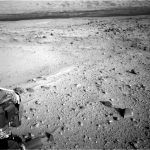
21st October 2013 Sol 429
We are now just a few more sols from the second waypoint. We have driven around the margin of a likely impact crater, on the left of the image, that has been eroded by the wind and partly buried by sand and dust. Unlike the MER rover missions we havent identified any meteorites that might be […]
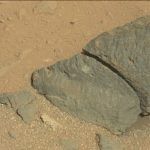
14th October 2013 Sol 424
The noon to pre-dawn temperature variation at Gale Crater can be up to 90 degrees centigrade. This MastCam image shows the effects of this extreme temperature variation. The dark rock has been split in two, in a form of physical weathering seen across Gale. Meanwhile, my colleagues Dr Susanne Schwenzer and Dr Derek Pullan […]
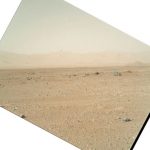
8th October 2013 Sol 417
Our last drive was about 85 m away from Waypoint 1 towards the SW. As we progress one of the new ways we image the landscape is with the MAHLI microimager. Normally we use this for close up views of rocks and checking the different instruments on Curiosity. However, we can also use it to […]
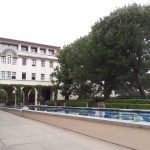
2nd October 2013 Sol 411
Mars Science Laboratory is having a team meeting at the California Institute of Technology (Caltech) in Pasadena, California. We are discussing our latest results and plans for the next stages of the mission. I am giving a talk about the composition of the ancient brine at Yellowknife Bay.
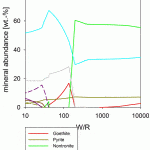
25th September 2013 Sol 404
We have now left Waypoint Point 1 and started out for Waypoint 2, at about 1 km distance. At Leicester University and the Open University (Dr Susanne Schwenzer) we are busy preparing a paper which uses a variety of ChemCam, CheMin, APXS data to work out the processes and conditions (T, fluid composition, pH etc.) that […]
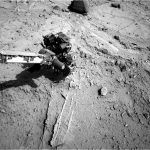
23rd September 2013 Sol 402
This image shows the arm deployed over the conglomerate and veins as we gather more MAHLI data. The shadow from the arm shows how we are operating at near noon, local time at Gale Crater. We have a window of opportunity for science operations partly dictated by the time of day and the associated temperatures.
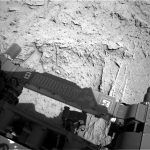
17th September 2013 Sol 397
We are now doing contact science at the Darwin outcrop. The rounded clasts in the NavCam image show that it is conglomerate. There are veins cutting though this rock as well, showing that they are not just present within the Sheepbed mudstones. Whether they are the same composition as the sulphate veins remains to be seen.
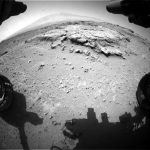
14th September 2013 Sol 393
We have reached Waypoint 1, our first stopoff point on the route to Mount Sharp. The Hazcam image shows Mt. Sharp in the distance and rock outcrop in the foreground. It is this rock that we will do ChemCam and contact science on. As we study it and get more high resolution images we will […]
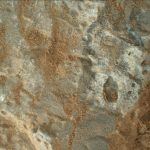
8th September 2013 Sol 388
In our last main drive we managed 140 m in one sol! This means we will get to Waypoint 1 more quickly than expected. One possible target type at the Waypoint will be to look for clasts in conglomerates, as these are likely to have preserved material from outside the crater bowl. The image shows a MAHLI image […]
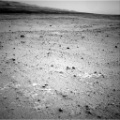
29th August 2013 Sol 378
We are now about 300 m from Waypoint1. That is one of the stopping off points on the way to the clay-rich horizon of Mt. Sharp. We will take the opportunity to deploy more of the Curiosity instruments. The terrain has a light toned outcrop with similarities to the conglomerates we have been seeing since […]

 Subscribe to jbridges's posts
Subscribe to jbridges's posts
Recent Comments